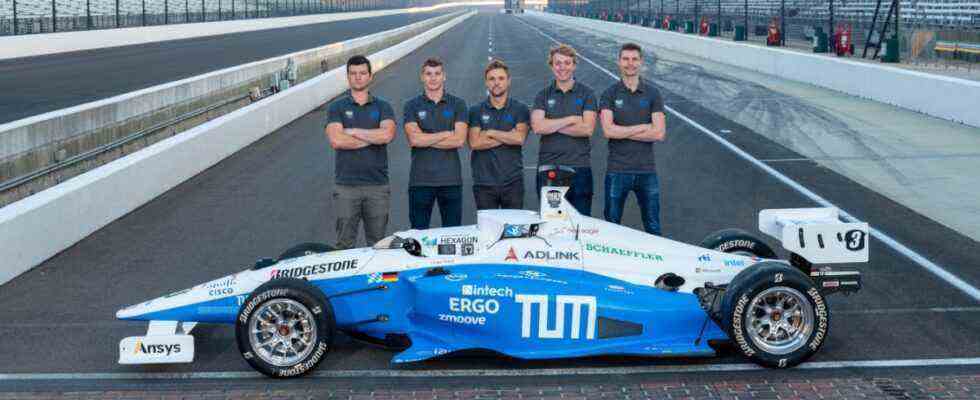It starts on January 7th. At 12 noon local time, the racing cars will roll into the starting line at the Las Vegas Motor Speedway. At the wheel: artificial intelligence. Also there: the “Autonomous Motorsport” team from the Technical University of Munich under the direction of Alexander Wischnewski and Phillip Karle, who have given their software the finishing touches on the research campus in Garching over the past few months.
The Garching crew consists of a total of 60 doctoral students and students from the chairs for automotive engineering and control engineering. Your delegation is going to Las Vegas with a big chest. Only last October they were able to win the “Indy Autonomous Challenge”, a price competition for programming autonomously modified racing cars on the Formula 1 track in Indianapolis among eight university research groups from the USA and Europe. There, Wischnewski and his colleagues demonstrated that artificial intelligence can control a car – in this case a Dallara IL-15 racing car – at a speed of more than 200 kilometers per hour. With its software, the TU racing car drove faster than the competition’s cars and brought the young researchers $ 1 million in prize money for the next developments.
In the race on January 7th, things will now be a step more demanding: As part of CES 2022, one of the largest international trade fairs for technological innovations, it’s not just about time – for the first time, two autonomously controlled cars will compete on the racing court in Las Vegas Dare to compete against each other in a direct duel. A major challenge for the control software and its developers. “In Las Vegas we will see a race in which the level of difficulty is again significantly increased,” explains Markus Lienkamp, professor at the chair for vehicle technology at the TU.
Unlike in Indianapolis, the autonomous cars in the race no longer only have to recognize and drive around static obstacles, they also have to react to the other cars on the track. Artificial intelligence may need to recognize dangerous interactions or overtaking maneuvers, assess them and respond appropriately – and at high speed, in fractions of a second. “We are showing the rapid technological progress in autonomous driving,” says Lienkamp.
A total of five teams take part in the race and, figuratively speaking, they send the algorithms they have developed onto the racetrack as drivers. The rules stipulate that two cars compete against each other. One racing car is always driving at a constant speed while the other is trying to overtake it. The game is repeated alternately, increasing the speed until a car can no longer overtake.
After the victory in Indianapolis, the TU team naturally hopes to defend its title in Las Vegas. Ultimately, however, the overriding goal is to further improve your own software at the limit of its driving dynamics in competition with others and to demonstrate the software’s potential on the racetrack, according to the team’s website.
Ultimately, all the experience gained in university competitions should ultimately be put to practical use for everyday future life. “In the race, we can test and optimize the quick reaction of an autonomous vehicle to unforeseen events at high speeds. This experience brings us a big step further in the development of safer autonomous vehicles in road traffic,” said team leader Wischnewski after the victory in Indianapolis.

